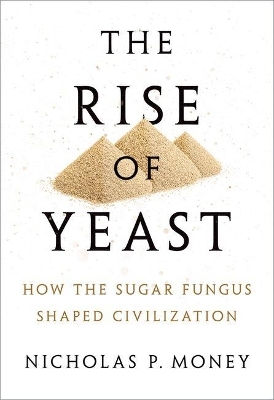
The Rise of Yeast
How the sugar fungus shaped civilisation
Seiten
2018
Oxford University Press (Verlag)
978-0-19-874970-7 (ISBN)
Oxford University Press (Verlag)
978-0-19-874970-7 (ISBN)
Yeast is humankind's favourite microbe, our partner in brewing, baking, and winemaking. Nicholas P. Money tells the story of this 10,000-year-long marriage, looking at how yeast served as a major factor in the development of civilization, celebrating its importance, and considering its future roles in molecular biology and genetic engineering.
From breakfast toast to evening wine, yeast is the microscopic thing that we cannot live without. We knew what yeast did as an invisible brewer and baker long before we had a clue about the existence of microorganisms. Ten thousand years ago, our ancestors abandoned bush meat and wild fruit in favor of farming animals and cultivating grain. Leaving the forests and grasslands, our desire for beer and wine produced by the fungus was a major stimulus for agricultural settlement. It takes a village to run a brewery or tend a vineyard. We domesticated wild yeast and yeast domesticated us. With the inevitable escape of the fungus from beer vats into bread dough, our marriage with yeast was secured by an appetite for fresh loaves of leavened bread.
Over the millennia, we have adapted the technologies of brewing, winemaking, and baking and have come to rely on yeast more and more. Yeast produces corn ethanol and other biofuels and has become the genetically-modified darling of the pharmaceutical business as a source of human insulin and a range of life-saving medicines. These practical uses of yeast have been made possible by advances in our understanding of its biology, and the power of genetic engineering has been used to modify the fungus to do just about anything we wish. We know more about yeast than any other organism built from complex cells like our own. To understand yeast is to understand life. In this book Nicholas P. Money offers a celebration of our favorite microorganism.
From breakfast toast to evening wine, yeast is the microscopic thing that we cannot live without. We knew what yeast did as an invisible brewer and baker long before we had a clue about the existence of microorganisms. Ten thousand years ago, our ancestors abandoned bush meat and wild fruit in favor of farming animals and cultivating grain. Leaving the forests and grasslands, our desire for beer and wine produced by the fungus was a major stimulus for agricultural settlement. It takes a village to run a brewery or tend a vineyard. We domesticated wild yeast and yeast domesticated us. With the inevitable escape of the fungus from beer vats into bread dough, our marriage with yeast was secured by an appetite for fresh loaves of leavened bread.
Over the millennia, we have adapted the technologies of brewing, winemaking, and baking and have come to rely on yeast more and more. Yeast produces corn ethanol and other biofuels and has become the genetically-modified darling of the pharmaceutical business as a source of human insulin and a range of life-saving medicines. These practical uses of yeast have been made possible by advances in our understanding of its biology, and the power of genetic engineering has been used to modify the fungus to do just about anything we wish. We know more about yeast than any other organism built from complex cells like our own. To understand yeast is to understand life. In this book Nicholas P. Money offers a celebration of our favorite microorganism.
Nicholas P. Money is Professor of Botany and Western Program Director at Miami University in Oxford, Ohio. He is an expert on fungal growth and reproduction. Nicholas has authored a number of popular science books that celebrate the diversity of the fungi and other microorganisms including Mr. Bloomfield's Orchard: The Mysterious World of Mushrooms, Molds, and Mycologists (OUP, 2002), and The Amoeba in the Room: Lives of the Microbes (OUP, 2014).
NOTES; BIBLIOGRAPHY; INDEX
| Erscheinungsdatum | 23.01.2018 |
|---|---|
| Zusatzinfo | 21 black and white images |
| Verlagsort | Oxford |
| Sprache | englisch |
| Maße | 142 x 224 mm |
| Gewicht | 352 g |
| Themenwelt | Sachbuch/Ratgeber ► Natur / Technik |
| Medizin / Pharmazie | |
| Naturwissenschaften ► Biologie ► Genetik / Molekularbiologie | |
| Naturwissenschaften ► Biologie ► Mykologie | |
| Technik ► Umwelttechnik / Biotechnologie | |
| ISBN-10 | 0-19-874970-8 / 0198749708 |
| ISBN-13 | 978-0-19-874970-7 / 9780198749707 |
| Zustand | Neuware |
| Haben Sie eine Frage zum Produkt? |
Mehr entdecken
aus dem Bereich
aus dem Bereich
50 Meilensteine der Genetik
Buch | Hardcover (2022)
Librero b.v. (Verlag)
CHF 13,90


